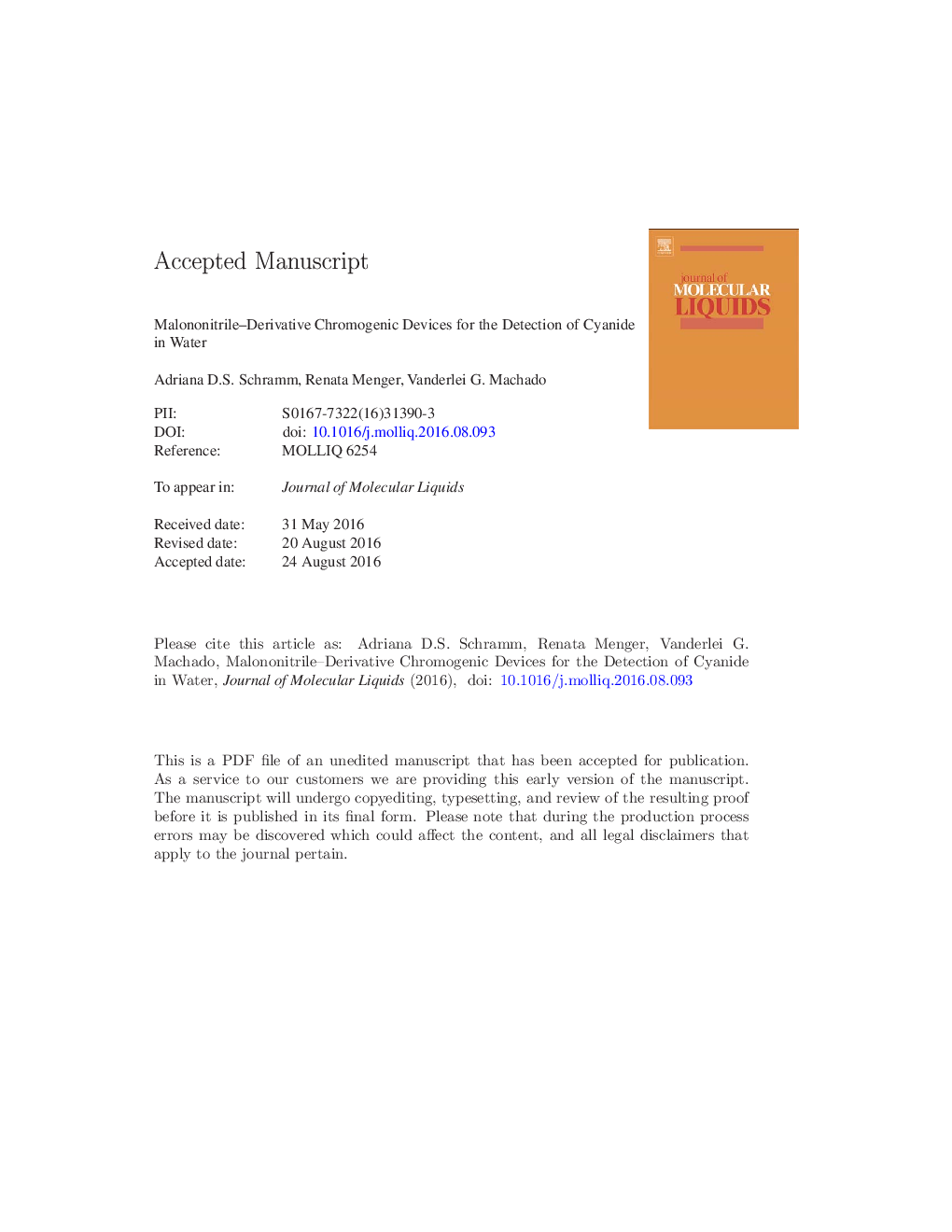| Article ID | Journal | Published Year | Pages | File Type |
|---|---|---|---|---|
| 5409580 | Journal of Molecular Liquids | 2016 | 41 Pages |
Abstract
Two compounds, 2-(4-hydroxybenzylidene)malononitrile (1a) and 2-[4-(dimethylamino)benzylidene]malononitrile (2), were synthesized with a view to their use as optical devices for anionic detection. Compound 1a was studied as a chromogenic chemosensor using an acid-base strategy. In purely aqueous medium, 1a was used in the detection of CNâ with high selectivity. This is possible because the colorless solution of the compound becomes yellow upon addition of the anion, which acts as a base and abstracts the hydrogen from the phenolic moiety of the molecule, generating the corresponding dye (1b). Optical detection and optical quantification limits were determined as 6.17 Ã 10â 7 mol Lâ 1 and 2.06 Ã 10â 6 mol Lâ 1, respectively. These values are much lower than the maximum level of the concentration of CNâ allowed by the World Health Organization in potable water (1.7 μmol Lâ 1). Compound 2 was used in a chemodosimeter approach for the highly selective detection of CNâ in water with cetyltrimethylammonium bromide above its critical micellar concentration. Solutions of 2 are yellow but become colorless with the addition of the anion. This is because CNâ attacks the CHC double bond in the compound and disrupts the electronic conjugation between the electron donating and the electron accepting moieties of the dye. Thus, with the addition of CNâ to the medium compound 1a acts as an off-on optical device while dye 2 operates as an on-off chemodosimeter.
Related Topics
Physical Sciences and Engineering
Chemistry
Physical and Theoretical Chemistry
Authors
Adriana D.S. Schramm, Renata Menger, Vanderlei G. Machado,
